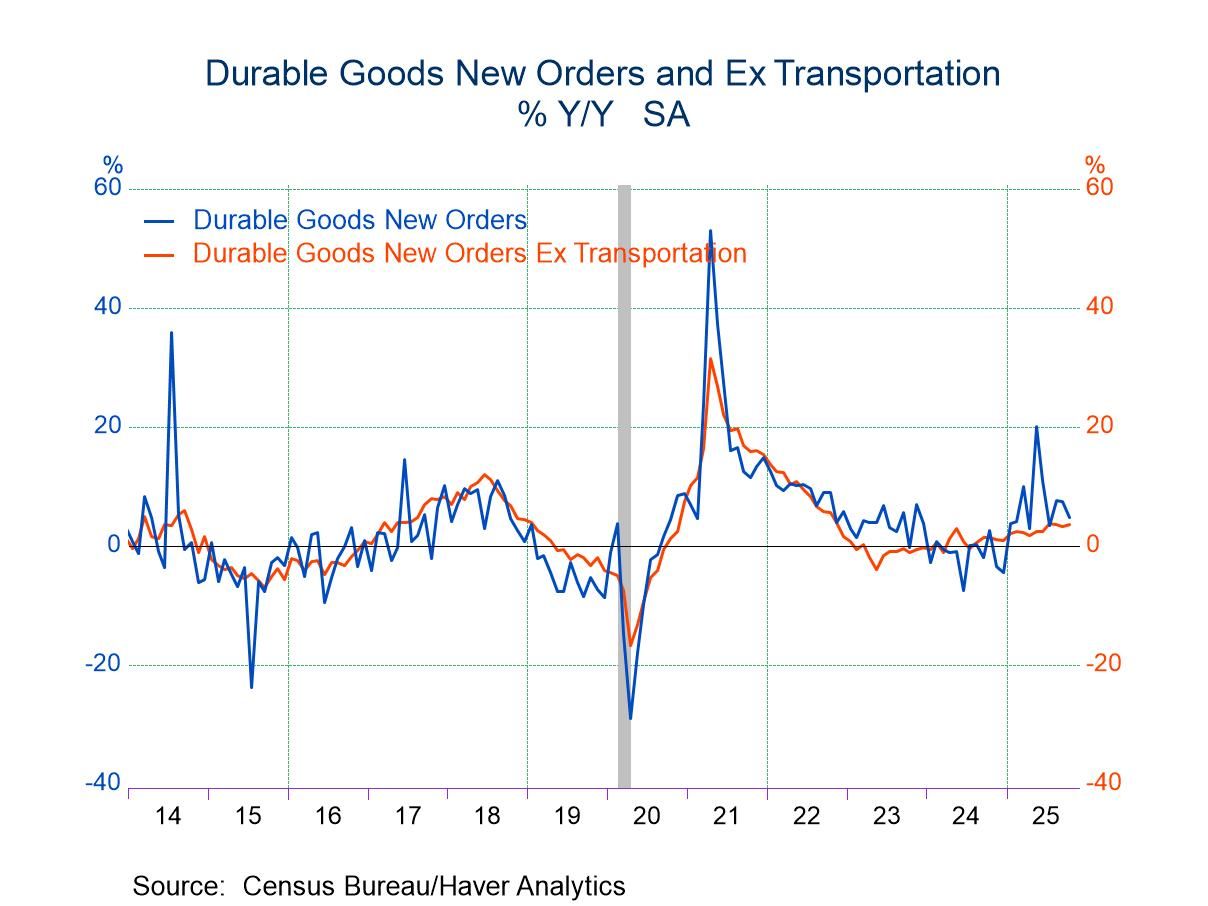U.S. Gasoline & Crude Oil Prices Fall
by:Tom Moeller
|in:Economy in Brief
Summary
- Retail gasoline prices weaken.
- Crude oil costs slip to late-2021 low.
- Natural gas prices remain well below December high.


Retail gasoline prices declined in the week ended March 20 to $3.42 per gallon (-19.3% y/y) after rising to $3.46 per gallon in the previous week. Prices, nevertheless, remained above the $3.34 low at the end of February. Gasoline prices remained below the mid-June 2022 peak of $5.01 per gallon but above their late December 2022 low of $3.09. The retail price of diesel fuel declined to $4.19 per gallon (-18.5% y/y) last week from $4.25 per gallon in the previous week. The price reached a recent peak of $5.81 per gallon in the third week of June 2022.
The average price of West Texas Intermediate crude oil weakened to $69.71 per barrel (-30.6% y/y) in the week ended March 17 from $77.35 in the prior week. Prices stood at the lowest level since the first week of December 2021, down by almost half from the recent high in the second week of June 2022. Yesterday, the price as $67.62 per barrel. The average price of Brent crude oil eased to $74.98 per barrel (-31.6% y/y) last week after easing to $82.86 per barrel in the previous week. The price peaked at $127.40 in mid-June of 2022. Yesterday, the price was $72.42 per barrel.
The price of natural gas was little changed at $2.47/mmbtu (-47.2% y/y) from $2.48/mmbtu in the prior week. Prices have fallen from their recent high of $6.78/mmbtu in the third week of December and from $9.56/mmbtu in the last week of August of 2022. The decline reflects unseasonably mild temperatures this winter and improved energy efficiency, which have reduced demand for natural gas. Yesterday, the price was $2.23/mmbtu.
In the four weeks ended March 10, gasoline demand declined 0.4% from a year earlier after having fallen 0.2% y/y in the prior week. These declines compare to 15.2% y/y growth at the end of 2021. Demand for all petroleum products fell 6.4% y/y in the latest four weeks in contrast to the 14.4% annual growth at the end of 2021. Crude oil input to refineries fell 2.1% y/y.
Gasoline inventories declined 2.1% y/y in the week ended March 10 compared to a 2.7% y/y decline in the prior week, while crude oil inventories fell a steady 14.1% y/y. Working the other way, inventories of distillate fuel oil increased 4.8% y/y and residual crude oil inventories rose 14.8% y/y.
Measured in days’ supply, gasoline inventories in the week ended March 10 fell to 26.8 days from 27.3 days in the previous week. It was the lowest level since late-December. The supply of crude oil eased to 31.8 days from 31.9 days in the prior week. It was increased from a low of 25.3 days at the end of last June.
These data are reported by the Energy Information Administration of the U.S. Department of Energy. The price data can be found in Haver’s WEEKLY and DAILY databases. Greater detail on prices, as well as the demand, production and inventory data are in USENERGY.
Tom Moeller
AuthorMore in Author Profile »Prior to joining Haver Analytics in 2000, Mr. Moeller worked as the Economist at Chancellor Capital Management from 1985 to 1999. There, he developed comprehensive economic forecasts and interpreted economic data for equity and fixed income portfolio managers. Also at Chancellor, Mr. Moeller worked as an equity analyst and was responsible for researching and rating companies in the economically sensitive automobile and housing industries for investment in Chancellor’s equity portfolio. Prior to joining Chancellor, Mr. Moeller was an Economist at Citibank from 1979 to 1984. He also analyzed pricing behavior in the metals industry for the Council on Wage and Price Stability in Washington, D.C. In 1999, Mr. Moeller received the award for most accurate forecast from the Forecasters' Club of New York. From 1990 to 1992 he was President of the New York Association for Business Economists. Mr. Moeller earned an M.B.A. in Finance from Fordham University, where he graduated in 1987. He holds a Bachelor of Arts in Economics from George Washington University.






